|
|
|
|
July 2022
 The National WWI Memorial Construction In A Minute video reveals that building the Memorial was monumental in its own right. It was accomplished during a raging global pandemic with its associated challenges of supply chain, labor, and safety. This video salutes all those whose dedication, sweat, and toil went into realizing this tribute to our Doughboys and all those who served in the name of Liberty and Freedom just over a century ago.
|
|
The Doughboy Foundation partners with "Google Arts & Culture"
Doughboy Foundation Legacy Society enables planned giving support
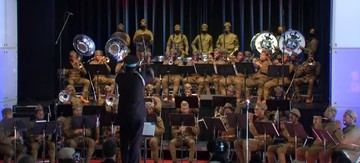 The 369th Experience plays at Kennedy Center in D.C. during Juneteenth Musical Salute Forward March for Freedom
The 369th Experience participated in a series of events and performances last month in Washington, DC, in recognition of Juneteenth, Black Music Month and the military and musical contributions of the 369th Infantry Regiment, also known as the Harlem Hellfighters. Forward March for Freedom brought band students from Historically Black Colleges and Universities (HBCUs) and other schools across the country to Washington, DC to participate in a series of events and performances, highlighted by a performance on the Millennium Stage at the Kennedy Center for the performing Arts. Click here to learn more about the 369th Experience and watch video of their Kennedy Center Performance.
Letters That You Will Not Get:
Women's Voices from the Great War
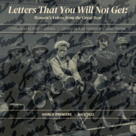
Letters That You Will Not Get: Women's Voices from the Great War gives voice to American, British, European, Asian, African and Caribbean women affected by WWI through a series of vignettes that share their responses to the war—from enthusiasm to resignation; support to opposition; the war’s beginning to its end. Combining powerful contemporary music with excerpts from women’s writings on both sides of the conflict, Letters tells the story of the Great War as experienced by the women who lived through it. Click here to read more about this wonderful new opera, and learn how you can attend the premiere in Brooklyn later this month.
|

The memory of how "In 1942 when I was eight years old, I accompanied my paternal grandmother, father, mother and brother in seeing the acclaimed and Academy Award movie Sergeant York in an Orangeburg, South Carolina theater" was the initial catalyst for Thomas A. Summers's lifetime interest in "this young uncle whose name I carry" Thomas Raysor Summers (left), who was killed in action in WWI. As the Centennial of WWI came around, the long-held interest led Summers to research and write an amazing narrative about his uncle, after whom an American Legion Post in Orangeburg is now named. Get comfortable in your seat, then click here to read the absolutely fascinating and unforgettable story of the life, times, family, and wartime death of Sergeant Thomas Raysor Summers, U.S. Army.
|

When his daughter moved from Belgium to Pittsburgh, PA in 1917 to study at Duquesne University, John Sterkendries became a frequent visitor to the U.S. After several years, he decided to buy a motorcycle here and see the country. On his local first ride, in a small town named Glassport, he "was astounded by the fact that every lamppost had a picture of a U.S. soldier attached to it. This kind of veteran pride is something that is unheard of in Belgium." Back in Belgium, after visiting the WWI Memorial at Ypres, John became a man with a plan, one that would return him to the U.S. again and again. Click here to read the whole story about his inspiration, his mission, and how unexpected events have reshaped his intended "ride along the outer borders of the continental United States."
|
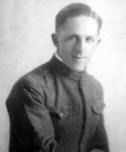
The Township of Scotch Plains dedicated a sign to fallen soldier Sgt. Herbert Terry on Rahway Rd. on Friday, July 1. Sgt. Terry was killed in action on Sept. 24, 1918, in France during World War I after saving a fellow solider from gunfire. Sgt. Charles Wolfel, whom Terry saved, and who was captured and taken prisoner by the German army, said that Terry's final words were: "Tell them I died fighting for my country." The Terry family has lived in Scotch Plains since the time of the Revolutionary War. Click here to read the entire article.
|
The Tomb of the Unknown Soldier Centennial Commemoration Lecture Series
Lots of articles recently about the Choctaw Code-Talkers of WWI:
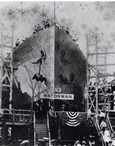 |
|
| |
World War I was The War that Changed the World, and its impact on the United States continues to be felt a century later, as people across the nation learn more about and remember those who served in the Great War. Here's a collection of news items from the last month related to World War I and America.
|
|
Borough Owes Boatload to WWI-Era Shipping Magnate
Hill 204: The 28th Division’s first combat action of WWI
Online fundraiser for American WWI hero’s headstone in Derry
Was ‘badass Marine’ denied a medal of honor for WWI valor?
The Great War in Color: Apocalypse World War I
The Battle of Belleau Wood During WWI
The American Red Cross World War I Effort
Commissioners split on relocating World War I monument
Community raises $18K to refurbish 91-year-old WWI monument
Best Memorial to WWI Dead Would be Service to the Living
Gold Coast’s rich history and role in World War I
Thousands more died so World War I would end at 1100
Who Really Blew Up Mare Island in World War I?
Chip Forbes, long-time friend of the Doughboy Foundation

A man is only missing if he is forgotten.
Our Doughboy MIA this month this time around is a little different, as he isn’t actually MIA anymore!
Private Earl Edward Jones was born January 9th, 1894, in Meyersdale Pennsylvania. He was one of the TEN children that William and Mary Jones stocked their household with! His father William died of a stroke in December 1915, so Earl went to work, taking his father’s place as a coal miner in order to help support the family.
On May 31st 1917, Earl joined the Pennsylvania National Guard, figuring it to be the best way to get overseas faster. He was assigned to Company C of the 10th PA Guard which, upon federalization on July 15th of that year became Company C of the 110th Infantry Regiment, 28th Division, training in part at Camp Hancock, Georgia. With the 110th he sailed for France aboard the City of Calcutta on May 3rd, 1918.
That summer, the 28th was engaged in the fighting around the Fismes sector and the Marne Valley. It was there, on July 15th 1918 – exactly one year to the day that Earl’s unit had entered federal service – that during fighting outside the hamlet of Sauvigny, Earl and several of his comrades were captured. In a statement given to the C company commander, Captain William C. Truxal, by Earl’s corporal, Herbert Jones (no relation) reads: “I helped to carry Private Earl E. Jones across the Marne River after having been taken prisoner. His left leg was blown off below the knee, he was bleeding profusely, and he was unconscious. We put him down on the north side of the river and were not permitted to move him. Later on, one of the men told me that they had buried him in the Marne River.” The burial had been very hurried as the Germans were in no mood to let the doughboys honor their dead and they were quickly hustled off to a detention location before being sent off to a prison camp. Consequently, the grave went unmarked.
Can you spare just ten dollars? Give 'Ten For Them' to Doughboy MIA and help us make a full accounting of the 4,423 American service personnel still listed as missing in action from WW1. Make your tax deductible donation now, with our thanks.
|
Merchandise from the Official
Doughboy Foundation WWI Store
 Lest We Forget: The Great War World War I Prints from the Pritzker Military Museum & Library. One of the nation’s premier military history institutions pays tribute to the Americans who served and the allies they fought beside to defeat a resourceful enemy with a lavishly illustrated book. It is an official product of the United States World War One Centennial Commission and is a tribute to those who served in the Army, Navy, Marine Corps, and what would become the Air Force. It serves as a lasting reminder that our world ignores the history of World War I (and the ensuing WWII) at its peril―lest we forget.
Honoring the Doughboys: Following My Grandfather's World War I Diary is a stunning presentation of contemporary photographs taken by the author that are paired with diary entries written by his grandfather, George A. Carlson, who was a soldier in the U.S. Army during World War I. Jeff Lowdermilk followed his grandfather's path through France, Belgium, Luxembourg, and Germany and returned with these meticulously crafted photographs and his own engaging stories that bring the diary to life for contemporary readers. Lowdermilk's passion for World War I and military history began as a young boy when he listened to his grandfather tell his stories about serving as an infantryman-- a "Doughboy"--in Europe during the Great War.
Proceeds from the sale of these books will help finish the new National World War I Memorial in Washington, DC.
This and many other items are available as Official Merchandise of the Doughboy Foundation.
|
|
|
John Simon Hilgenhold
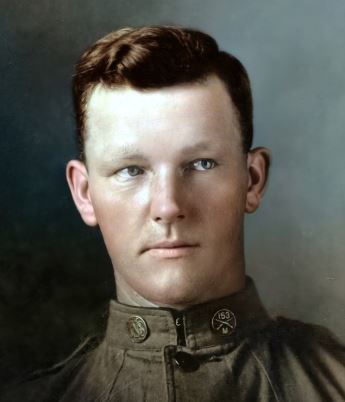
Submitted by: John Levi Hilgenhold {Great-Grandson}
John Simon Hilgenhold was born in 1892. John Hilgenhold served in World War 1 with the United States Army. The enlistment was in 1918 and the service was completed in 1919.
Story of Service
My great-grandfather, John Simon Hilgenhold, was born on March 24, 1892 in a rural community, known as St. Marks, in Perry County Indiana. The grandson of Dutch-German immigrants, he was the seventh of eleven children. As a young man he completed his education after the eighth grade, as was customary for the time, and worked on the family farm with his father and three brothers.
John registered for the draft on June 5, 1917 at the age of 25. Just under a year later, on May 28, 1918 he was drafted into service of the U.S. National Army and reported to Camp Zachary Taylor in Louisville, Kentucky along with forty-eight other Perry County men. One of whom, Carl Goelzer, would eventually become his brother-in-law. He trained as an infantryman with the 44th Company, 11th Battalion, 159th Depot Brigade and completed basic training on June 16th.
He was then transferred to Company M, 153rd Infantry Regiment, 39th National Guard Division that was stationed at Camp Beauregard near Alexandria, Louisiana. This influx of new recruits brought the division up to full strength and they set sail from Newport News, Virginia a little over a month later on August 6th aboard the S.S. Kursk, a converted British troop transport. Upon arrival in Brest, France, the 153rd traveled to the St. Florent region, southwest of Bourges, until it was dismantled and its personnel sent to replace battlefield losses in existing combat divisions.
Private Hilgenhold was transferred to Company C, 126th Infantry Regiment, 32nd Infantry Division on September 13th. Days later, the division mobilized in preparation of the Meuse-Argonne offensive, the largest battle in American history to date.
|

|
|
|
|